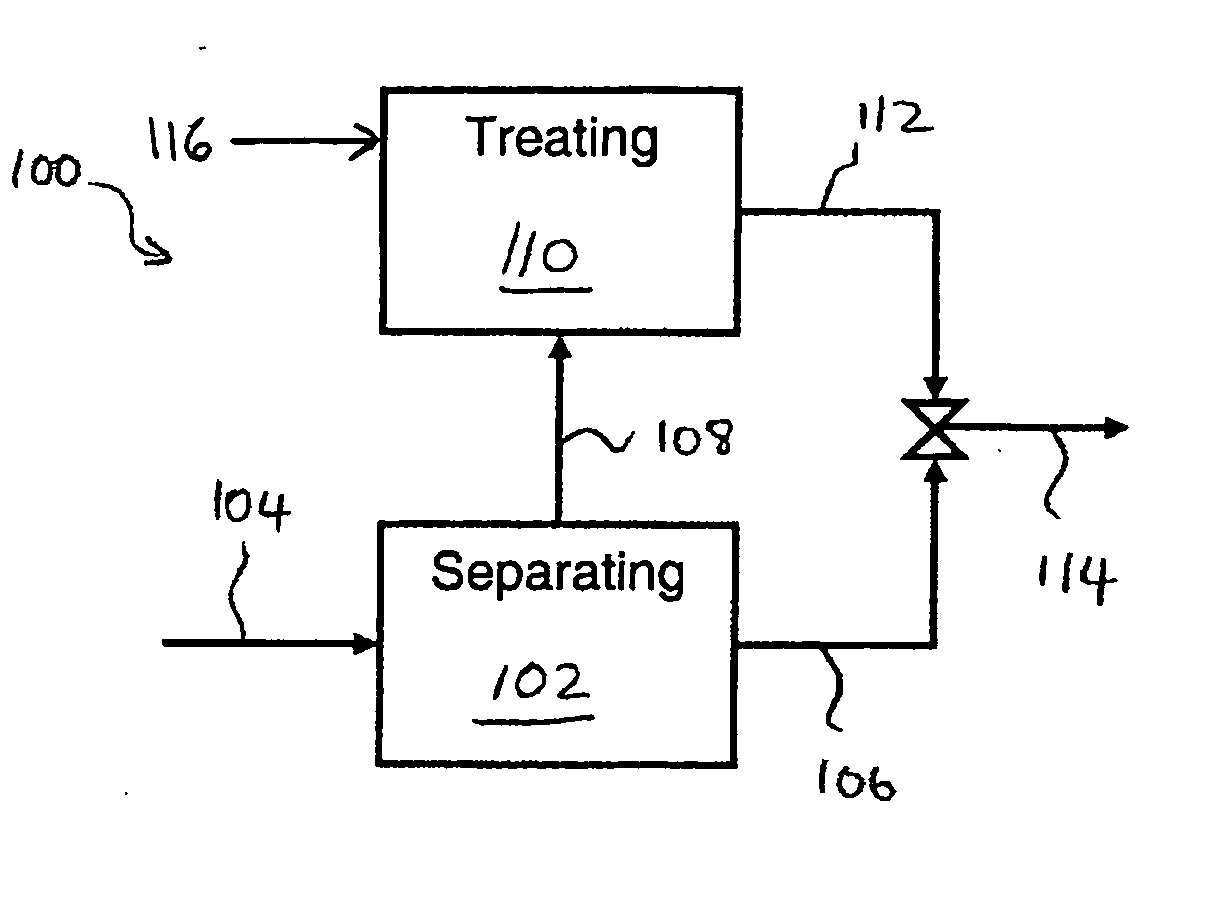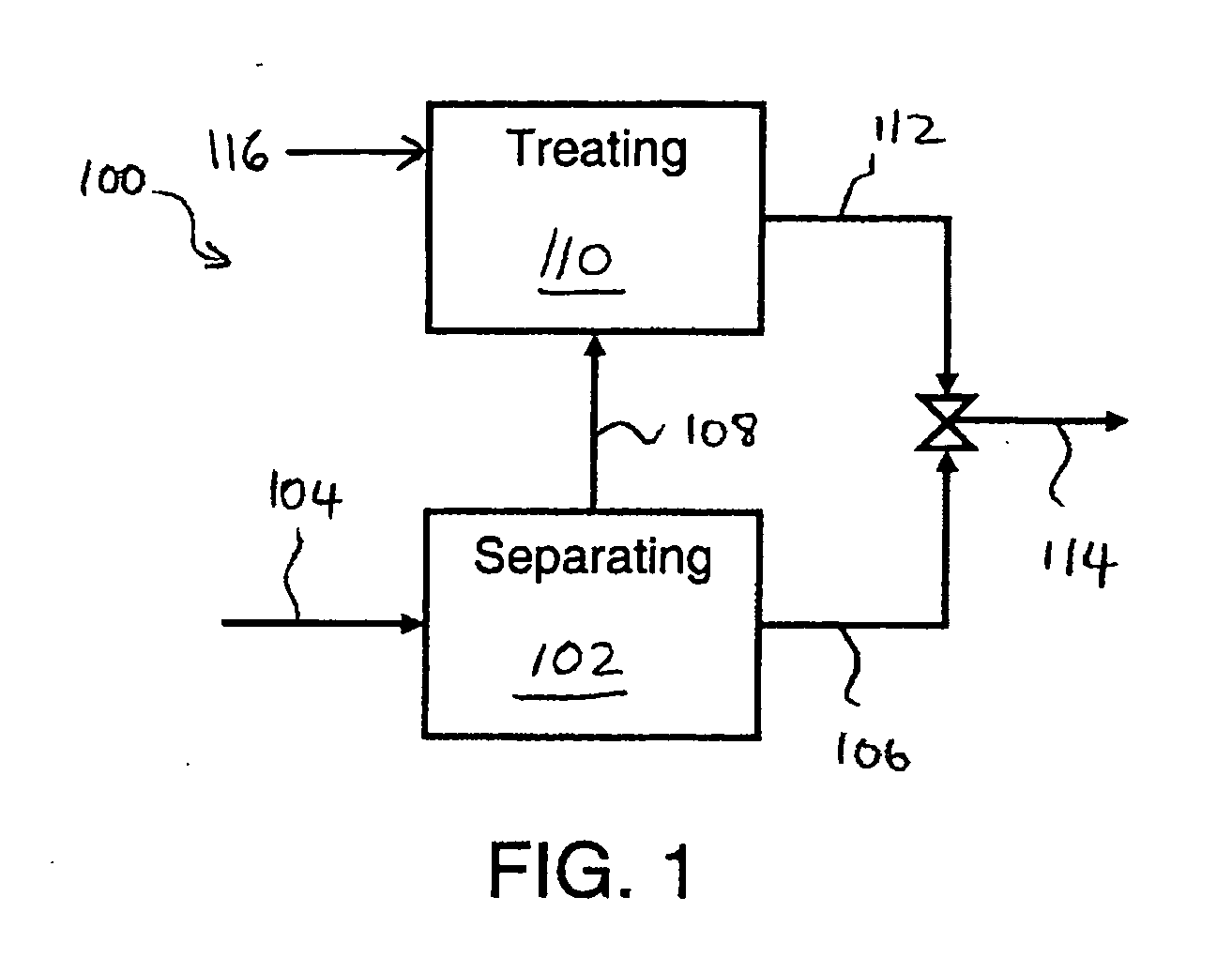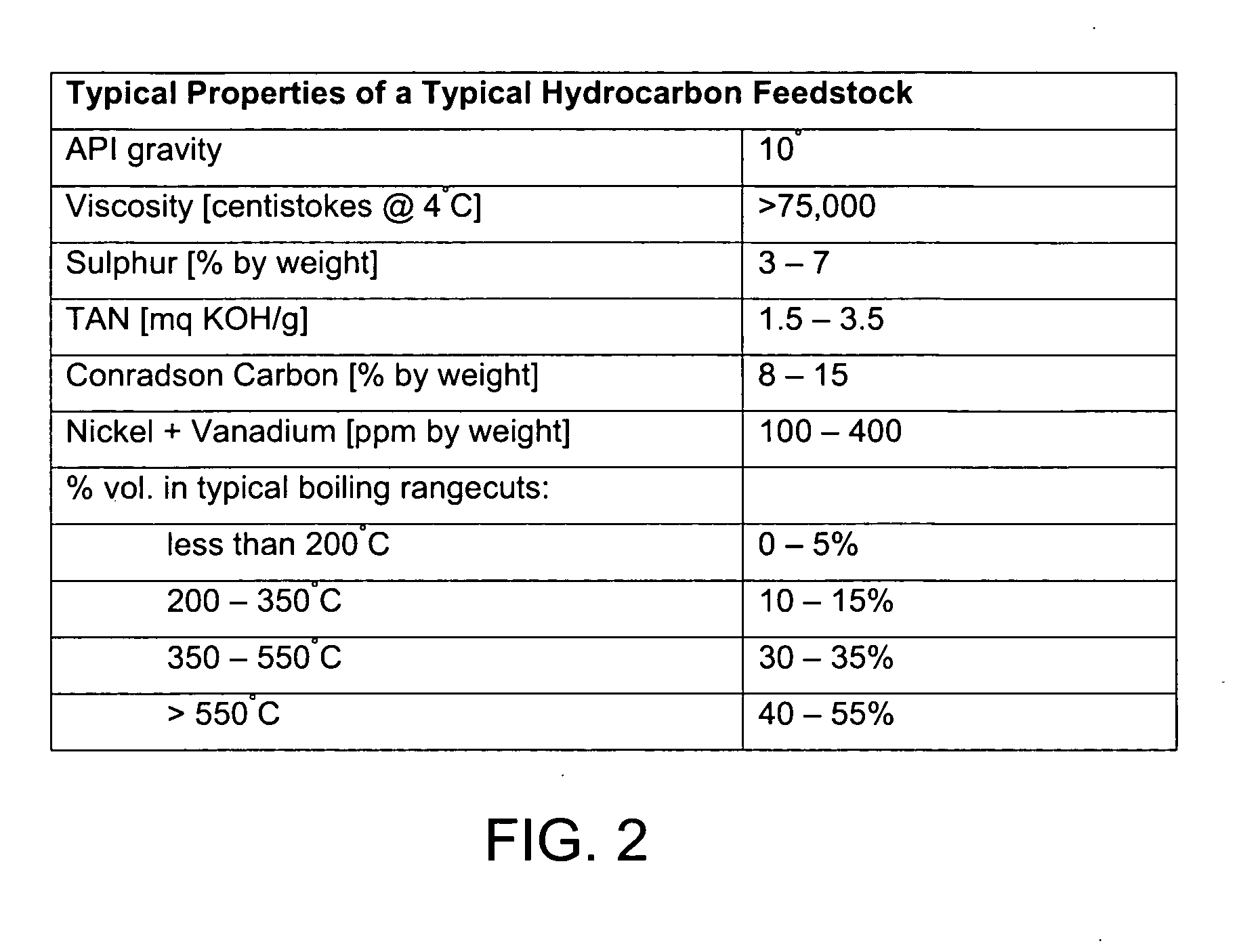Process for treating a heavy hydrocarbon feedstock and a product obtained therefrom
a technology for hydrocarbon feedstock and product, which is applied in the direction of hydrocarbon oil treatment, hydrocarbon distillation, liquid hydrocarbon mixture production, etc., can solve the problems of high cost of full upgrading facilities, too dense and viscous for transport in existing pipelines, and the possibility of bitumen undergoing quality changes
- Summary
- Abstract
- Description
- Claims
- Application Information
AI Technical Summary
Problems solved by technology
Method used
Image
Examples
example 1
[0085] A first theoretical example is described with reference to FIG. 4, and illustrates the theoretical processing of a heavy hydrogen feedstock, having characteristics as set forth in FIG. 2. The feedstock has an initial API gravity of about 10°.
[0086] The feedstock is first subjected to separation in a deep vacuum flashing process to produce a residue component constituting approximately 50% of the feedstock and a light component constituting the remaining 50% of the feedstock. The residue component has an API gravity of about 3° , and has a substantial portion of the sulphur, Conradson carbon and nickel and vanadium from the feedstock concentrated therein.
[0087] The light component is then subjected to treatment in a hydrocracker (with hydrogen added from an external or internal source) to produce a synthetic transport diluent, which in this example is designed as a naphtha rich stream, with a estimated 55° API gravity. The hydrocracking process also adds to the volume of the...
example 2
[0090] A second theoretical example is described with reference to FIG. 5, and illustrates the theoretical processing of a heavy hydrogen feedstock where a diverted portion of the residue component is diverted for an alternative use, such as for thermal energy generation. As in Example 1, the feedstock has an initial API gravity of about 10°.
[0091] The feedstock is first subjected to separation in a deep vacuum flashing process to produce a residue component, constituting approximately 50% of the feedstock, and a light component constituting the remaining 50% of the feedstock. A diverted portion of the residue component equal to about 18% of the original feedstock is diverted for the alternative use, leaving a remaining residue component.
[0092] The light component is subjected to treatment as in Example 1 to produce a synthetic transport diluent having an API gravity of about 55°. As in Example 1, the volume of the synthetic transport diluent increases due to the treatment of the ...
example 3
[0094] A third theoretical example is described in reference to FIG. 6, and illustrates the theoretical processing of a heavy hydrogen feedstock to just meet applicable criteria for pipeline transport, in this case an API gravity of 19° and a viscosity of 350 centistokes or less. As in Example 2, a portion of the separated residue component is diverted for an alternative use, such as thermal energy generation.
[0095] As in Example 1, the feedstock has an initial API gravity of about 10° and the feedstock is first subjected to separation in a deep vacuum flashing process to produce a residue component, constituting approximately 50% of the feedstock, and a light component constituting the remaining 50% of the feedstock.
[0096] As in Example 2, a diverted portion of the residue component equal to about 18% of the original feedstock is diverted for the alternative use, leaving a remaining residue component.
[0097] The light component is subjected to treatment in a hydrocracker to produ...
PUM
| Property | Measurement | Unit |
|---|---|---|
| temperature | aaaaa | aaaaa |
| temperature | aaaaa | aaaaa |
| distance | aaaaa | aaaaa |
Abstract
Description
Claims
Application Information
 Login to View More
Login to View More - R&D
- Intellectual Property
- Life Sciences
- Materials
- Tech Scout
- Unparalleled Data Quality
- Higher Quality Content
- 60% Fewer Hallucinations
Browse by: Latest US Patents, China's latest patents, Technical Efficacy Thesaurus, Application Domain, Technology Topic, Popular Technical Reports.
© 2025 PatSnap. All rights reserved.Legal|Privacy policy|Modern Slavery Act Transparency Statement|Sitemap|About US| Contact US: help@patsnap.com



